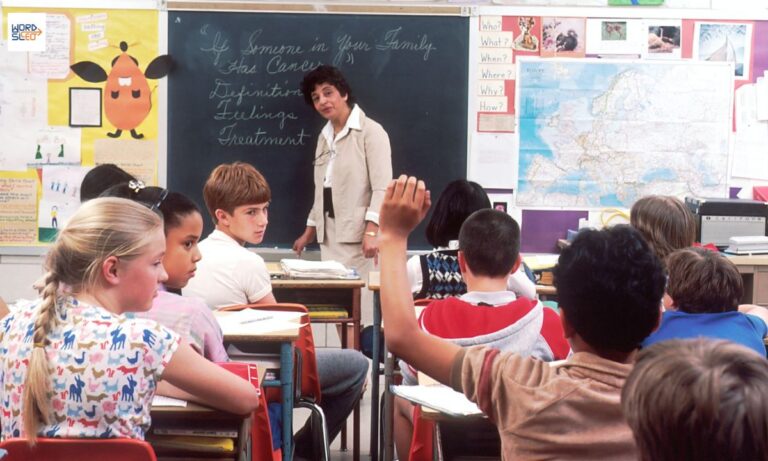When writing, it’s easy to get confused between student’s, students’, and students. These forms all serve different purposes in English grammar, and understanding when and how to use them will greatly improve your writing.
In this guide, we’ll break down these forms, explore their meanings, and provide useful examples to help you master possessive grammar.
The Singular Student
Student refers to a single individual who is learning. It is used when you are referring to just one person attending a class, university, or school. This is the simplest form to use because there is no possession involved.
Example:
- “The student raised her hand to ask a question.”
In this sentence, student is used to refer to just one person without any possession. It’s a basic noun indicating a single learner.
Enter the Student’s Possessions
When we talk about what a student owns or is associated with, we need to use student’s, which shows possession. This is the singular possessive form. The apostrophe and ‘s’ indicate that something belongs to the student.
Example:
- “The student’s notebook was filled with notes.”
- “I saw the student’s backpack by the door.”
In both of these examples, the student’s notebook and backpack show that the item belongs to one specific student. It’s a way of indicating possession or association.
Multiple Students
When we refer to more than one student, the plural form is used: students. This form indicates that we are talking about multiple learners but without any possession. It’s simply the plural form of student.
Example:
- “The students sat together in the front row.”
- “The students walked to the library after class.”
In these examples, students indicates more than one learner, but there’s no ownership or possession involved.
Students’ Collective Ownership
When referring to something that belongs to a group of students, we use students’. This is the plural possessive form, which shows that the possession belongs to more than one student.
Example:
- “The students’ homework was due on Friday.”
- “The students’ contributions to the project were appreciated.”
In these examples, the apostrophe after the s indicates that the homework or contributions belong to multiple students collectively.
Read This Blog: 24 Synonyms for “How Is Everything Going?” With Examples
Scenarios to Solidify Understanding
Let’s look at some specific scenarios to better understand how to use student’s, students’, and students. These real-life situations will help make the distinctions clear.
The Classroom
In a classroom setting, you can use these forms in different ways, depending on whether you’re talking about one student or many.
| Scenario | Correct Usage | Example Sentence |
| One student’s desk | Student’s | “The student’s desk was neat and organized.” |
| Multiple students’ desks | Students’ | “The students’ desks were arranged in a semicircle.” |
The School Fundraiser
During events like a fundraiser, you may refer to a single student’s idea or multiple students’ combined efforts.
| Scenario | Correct Usage | Example Sentence |
| One student’s idea | Student’s | “The student’s fundraiser idea was to sell cookies.” |
| Multiple students’ efforts | Students’ | “The students’ efforts raised thousands of dollars.” |
The School Newspaper
Whether discussing a single student’s work or multiple students contributing to a project, the possessive forms will vary.
| Scenario | Correct Usage | Example Sentence |
| One student’s article | Student’s | “The student’s article on climate change was featured.” |
| Multiple students’ articles | Students’ | “The students’ articles covered a variety of topics.” |
Common Pitfalls and How to Avoid Them
English possessive forms can be tricky. Here are some common mistakes people make when using student’s, students’, and students.
- Misplacing the apostrophe: Remember that a student’s shows ownership by one person, while students’ shows ownership by more than one person.
- Incorrect: “The student’s essays were impressive” (when referring to more than one student).
- Correct: “The students’ essays were impressive” (for multiple students).
- Forgetting the apostrophe: Without an apostrophe, the word becomes a plural noun and lacks possession.
- Incorrect: “The students assignments were due.”
- Correct: “The students’ assignments were due.”
Read This Blog: 25 Other Ways to Say “Proud of You” (See Examples)
Beyond Basic Possession: Complex Cases
Possession can become more complicated when dealing with joint or individual ownership. Let’s explore these scenarios.
Joint Possession
When two or more people share possession of something, only the last name or item gets an apostrophe. This is called joint possession.
| Scenario | Correct Usage | Example Sentence |
| Joint possession by two students | Sarah and Mike’s | “Sarah and Mike’s presentation impressed the teacher.” |
Here, the apostrophe goes only after Mike’s since they share possession of the presentation.
Individual Possession
When two or more students own separate items, each one gets an apostrophe. This is called individual possession.
| Scenario | Correct Usage | Example Sentence |
| Individual possession by two students | Sarah’s and Mike’s | “Sarah’s and Mike’s essays were excellent.” |
Each student owns their own essay, so both Sarah’s and Mike’s are possessive forms.
Time and Worth
Possession can also apply to expressions of time or worth, such as “a week’s work” or “the semester’s end.”
| Scenario | Correct Usage | Example Sentence |
| Time or worth expressed as possession | Week’s or Semester’s | “The essay is worth two weeks’ work.” |
These forms show how we express ownership over abstract concepts like time or effort.
Practical Applications in School Life
Let’s see how the rules around student’s, students’, and students apply to everyday situations in school life.
| Scenario | Correct Usage | Example Sentence |
| Attendance | Student’s or Students’ | “The student’s attendance record was perfect.” or “The students’ attendance improved.” |
| Textbooks | Student’s or Students’ | “The student’s textbooks were neatly stacked.” or “The students’ textbooks arrived late.” |
These examples show how we use the possessive forms to describe situations involving school resources and activities.
Frequently Asked Questions
When do I use student’s versus students’?
Use student’s for possession by one student and students’ for possession by multiple students.
Can students be used without an apostrophe?
Yes, students is just the plural form, and it doesn’t show possession.
How can I avoid apostrophe mistakes in my writing?
Always check if you’re referring to one student (use student’s) or multiple students (use students’).
What if two students jointly own something?
Use only the apostrophe after the second student’s name, like Sarah and Mike’s project.
How do I express possession when talking about time or value?
Use week’s or semester’s to show possession in these contexts.
Conclusion
understanding the differences between student’s, students’, and students is essential for mastering English grammar and ensuring clarity in your writing.
Whether you’re referring to one student’s possession, multiple students’ collective ownership, or simply mentioning more than one student, the rules are straightforward once you grasp the concepts.

David is a talented content writer and digital marketer with expertise in SEO, social media management, and online marketing.

